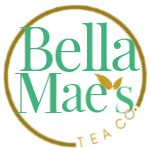Tea is routine. Tea is tradition. Tea is cultural.
What I did not know is the complexities surrounding tea. This drink of choice is the world’s second most drunk beverage after plain water. It is the kick-starter of mindfulness, a notch on the road to wellness, and it has even caused wars. As tea continues to grow in popularity, it’s time we learned the basics about this widely consumed drink of the world.
What is tea?
Tea is a beverage prepared by pouring hot water over leaves from the plant Camellia sinensis. What is Camellia sinensis you ask? It is an evergreen plant that is found in India, China, Kenya, and other countries. It is the only plant that produces the leaves for tea. Tea tastes varies on the location, how it’s grown, and how it is processed. Did you know that all tea types comes from this same plant? (If you just had a mind blowing moment, I am in good company.) There are seven types of tea that is produced from this plant: black, oolong, green, white, purple, yellow, and pu’erh. Each type has it’s own flavor, appearance, and attributes.
What is the differences between the type of teas?
What makes each type of tea different is the processing. There are five basic steps in tea processing: plucking, withering, rolling, oxidizing, and firing. Each type of tea goes through a series of these steps. The processing of each tea leads to different flavors, aromas, taste, appearance, and colors. Most people are familiar with green tea and black tea. Don’t overlook other types of teas such as oolong, pu’erh, yellow tea, purple tea and white tea. Oolong tea is the most processed tea and takes on a smooth, slightly astringent, floral or fruity flavor. Pu’erh tea has a earthy and woodsy taste. Yellow tea is a smooth and silky tea with benefits similar to green tea. Purple tea is a newly discovered tea that has a pleasant and sweet undertone. White tea is delicate, light, and the least processed.
Are you really drinking tea?
Herbal teas are not really tea at all. (At this point, I’m fully aware you are probably side-eyeing me.) Tea can only processed from the leaves of the Camellia sinensis. Herbal teas aka herbal infusions also known as tisanes is the steeping of herbs, flowers, fruit, and spices. Infusions brings out flavors, nutrients, vitamins, and minerals of the ingredients. Teas such as chamomile, rooibos, and peppermint, hibiscus are actually herbal infusions. Many people (including myself) will refer to herbal infusions as tea and will often times include tea in a herbal infusion. Fun fact: three of the four Bella Mae’s Teas are herbal infusions.
Does tea have caffeine?
Yes, yes it does. However the caffeine content is approximately less that half of what a cup of coffee produces. Keep in mind, not all teas are equal in caffeine. Black teas has 40 – 80 mg of caffeine compared to white teas that has 10-20 mg. Herbal tea/infusions are usually caffeine-free. You can find the caffeine level on each Bella Mae’s Tea product description.
Tea Bags or Loose Leaf?
Tea bags include broken tea leaves and dust in a confined bag. Although, it’s convenient, it lacks the benefits of loose leaf tea. Bags constrict the leaves from expanding to maximize the flavor. Loose leaf is better quality and better testing. One can use infusers/strainers or teapots to steep the leaves or purchase environmentally friendly bags for loose tea.
I do hope this post has brought about a bit of clarity. As my mom says, sharing is caring. Try new teas. Try herbal infusions. Discover what flavors and aromas delight you. My goal is for non-tea drinkers or individuals that want to try something different understand the basics of tea. Explore the world of tea and become tea people.

